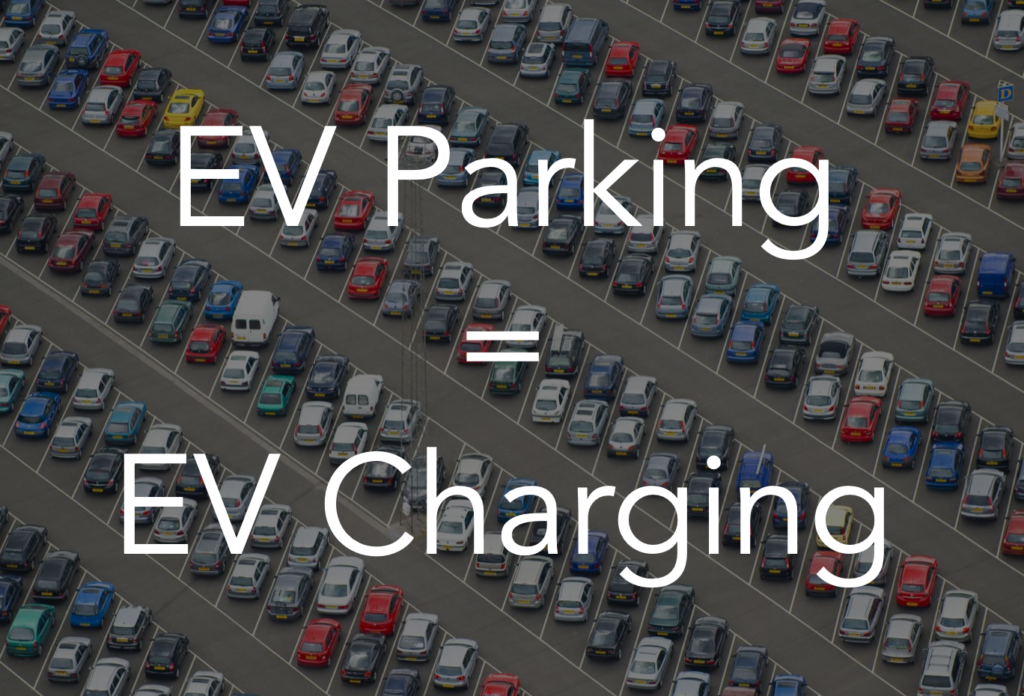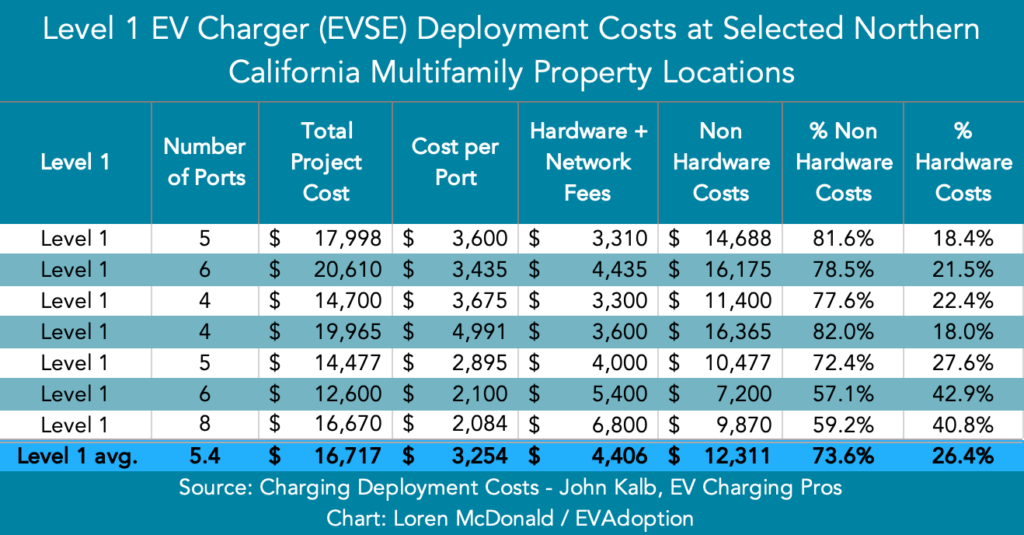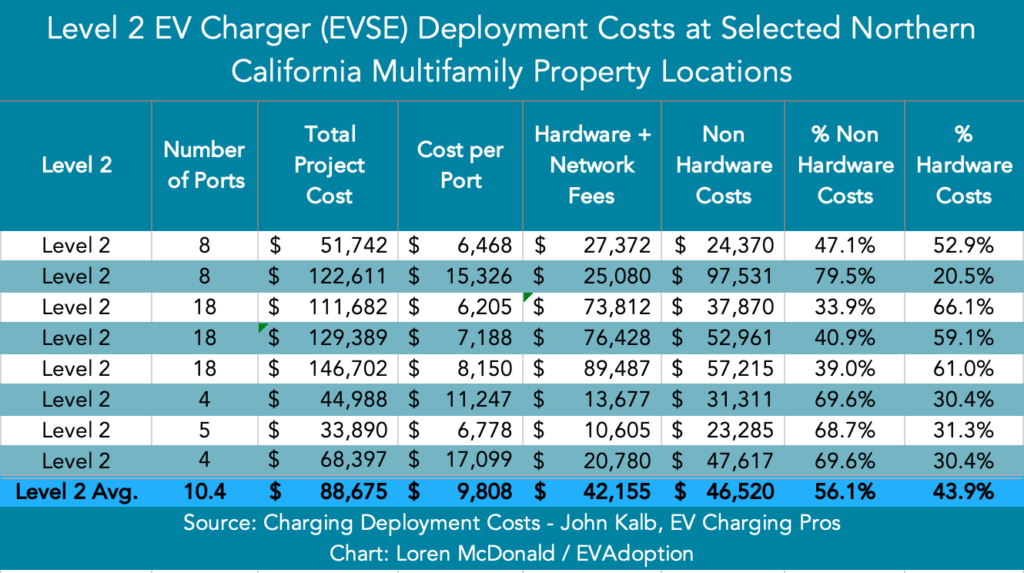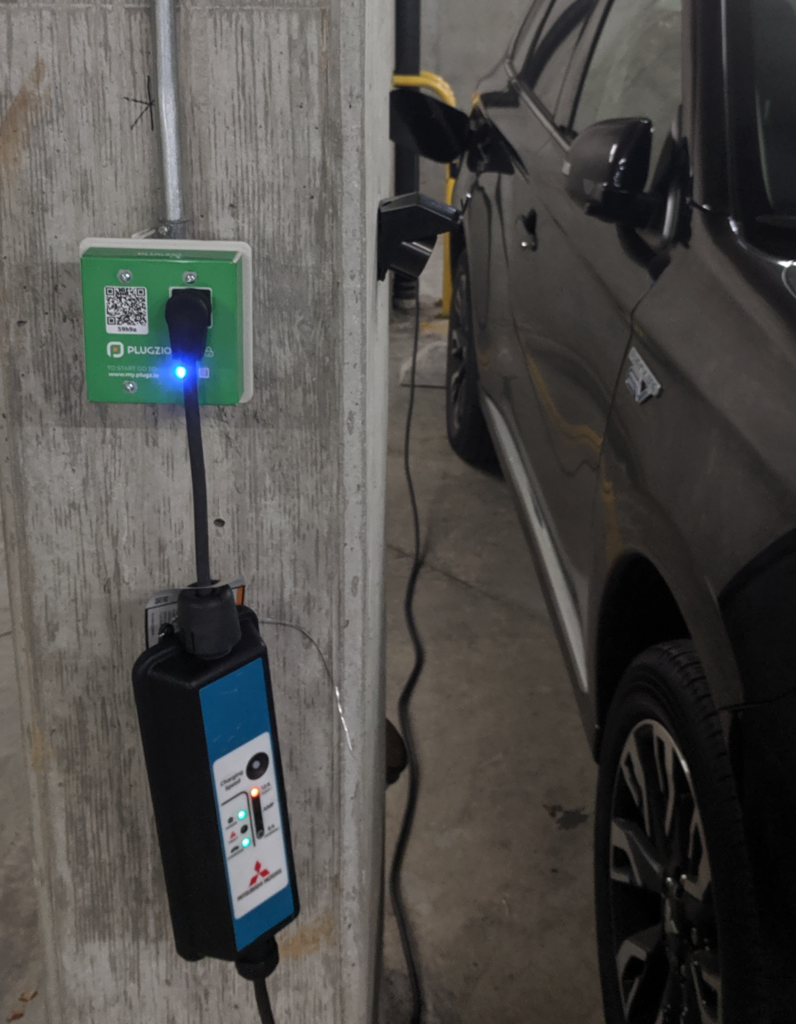As we wait for Congress to fully return from their recess and vote on various legislation, I continue to be extremely concerned about how as much as $10 billion in federal government grants will be be spent on EV charging infrastructure. In short, I’m predicting what I call the “overcharging of America.”
What I mean by that is there seems to be an insatiable appetite to spend as much money as possible on the most powerful EV chargers with little consideration for charging use cases and dwell time, utilization, customer experience, uptime, accountability, and perhaps most importantly — return on taxpayer dollars.
We clearly need to increase the amount of charging infrastructure we have to help drive EV sales in the US. But as I outlined in my recent article, How Many EV Charging Stations Will $10 Billion Buy for America?, EV charging infrastructure is incredibly expensive.
“Construction and the charging units for each parking stall cost about $110,000. When we’re talking about building a station, we’re talking about a half a million to a million dollars in capital.” – Cathy Zoi, CEO – EVgo
To install 4-180 kW chargers can easily cost roughly $500,000-$800,000 depending on the hardware chosen. With the Bipartisan Infrastructure Bill grants covering up to 80% of the cost of charging infrastructure projects, that means that a charging location with 8-180 kW chargers can easily cost taxpayers $1 million.
The intent of this article is not to debate whether taxpayer money should be used to build out EV charging infrastructure, but rather ask: “What is the best use and return on the investment of taxpayer dollars?”
Because so many consumers compare the EV charging process to that of filling up an ICE car at a gas station, there’s an assumption by some that we have to try and replicate the gas station model for refueling electric vehicles. And in one area we do — at least to an extent. And that use case is charging while on road trips.
Because the US is so vast and spread out and we lack convenient passenger rail in most parts of the country, Americans’ best, most affordable, preferred, and often only option to take the kids to Disneyland/Disney World or see grandma 500 miles away — is by car. Most American households may only take from one to four of these types of road trips per year, however a majority of these households will also not consider a BEV (at least as their primary car) until charging on interstate highways for road trips is abundant, quick, and an all-around good customer experience.
While having a large number of high-powered DC fast chargers is critical to achieving mainstream EV adoption, we also need to be very smart about how we build out charging infrastructure to support the regular, daily driving needs of Americans. And a big part of that could and should be good old Level 1/120V chargers and smart outlets.
The 120 volt outlet and Level 1 charging equipment are often derided by EV advocates because of how long it will take to fully charge a BEV. But often these same people are the first ones to point out that virtually every home, apartment, condo, and commercial building in the US has electricity and a 120v outlet.
8 Reasons The US Government Should Invest in Level 1 Charging Infrastructure
So with this article, it is time to show Level 1 /120v charging some love and to outline why the good-old 120V outlet actually makes a lot of sense for helping to build out America’s EV charging infrastructure. Following are eight reasons why:
1. Long-dwell use cases: Except for when taken on road trips, most cars sit parked 22-23 hours per day. Level 1 can typically add between 3.5 to 6.5 miles of range per hour, which at 22 hours = 77 to 143 miles per day. If you just look at when an EV is parked at home overnight (7 pm to 7 am) — that = 42 to 78 miles. This is plenty of range for “most” (not all) drivers. (Note: If you live in a cold weather region, charging speed and range can be significantly affected. Here are some tips from Webasto.)
Now, some of you are thinking to yourself that while yes, my car typically sits parked for about 22 hours per day, much of that isn’t at home but rather where I work, go to school, at the store or mall, etc. True, and that is where affordable workplace and retail/mall charging also come into play. In other words, the future of most EV charging is slow and distributed. And that means that less costly to deploy Level 1 and Level 2 chargers can be located anywhere and everywhere for EV drivers to simply plug in wherever their car sits parked.
In the future, much of this infrastructure (mostly Level 2) may be wireless such as solutions from WiTricity. This will make it so that all an EV driver has to do is pull into parking spot at the local mall or supermarket and charging will begin simply be accepting a prompt on your smartphone or car’s instrument screen. But for those cars parked all-day or all night, a 120 volt outlet will often be the most cost-effective solution that also provides enough range for an average driver’s daily needs.
2. PHEVs: Plug-in hybrid electric vehicles (PHEVs) currently comprise nearly 37% of all EVs sold in the US since 2011. That means that nearly 4 out of every ten EVs on the road are PHEVs. The typical electric range of PHEVs is from about 15 to 50 miles, with most now between 20 and 40 miles. For these EVs, L1/120 volt charging is ideal as for anyone with access to charging where they live or work, can generally and easily replenish their PHEV each day/night.

3. Replenishment: EV charging is different than fueling an ICE vehicle. If you drive 35 miles to and from work Monday through Friday, each day you come home and plug in and replenish those miles overnight. If you drive a BEV with 200-300 or more miles of range, on those days where perhaps you drive 100 miles you will still have plenty of range to cover your daily needs through your daily or nightly replenishment charging. And of course if you take your BEV out on a long road trip or weekend getaway, you will tap into DC fast chargers along interstate highways and Level 2 destination chargers at your hotel or resort.

4. Insufficient power/infrastructure: In many markets in the US, the majority of apartment properties were built in the 1950s-1980s. These properties typically do not have enough power to support multiple Level 2 EVSE, which requires costly panel upgrades and often the need for additional power to be pulled from the utility.
The net of this is that property owners who don’t want to be in the refueling business to begin with and would rather spend their capital improvement budgets on the apartments where they can get a clear return on their investment. For these property owners and use cases, a Level 1 approach may often be the best approach and government grants for Level 1 would make the case for 120 volt charging even more compelling.
5. Cost/Number of EVSE: When deploying a L1/120v smart outlet a multifamily property owner can typically install 3X the number of L2 EVSE, for half the cost. Below are actual project costs from a variety of multifamily properties in Northern California comparing sample costs for Level 1 versus Level 2 deployments.


And here is a link to a Peninsula Clean Energy case study showing a significant savings by opting for a Level 1 solution.

6. Bipartisan Infrastructure Bill (BIB) grant locations: “A project receiving a grant under this paragraph may be located on any public road or in other publicly accessible locations, such as parking facilities at public buildings, public schools, and public parks, or in publicly accessible parking facilities owned or managed by a private entity.”
So much of the federal grant funding will go toward infrastructure (“… parking facilities at public buildings, public schools, and public parks, or in publicly accessible parking facilities”) where EVs are parked frequently for 8 or more hours.
7. No need to move your EV: One of the obvious main arguments the anti-Level 1 group will make is that you can add a lot more range, more quickly with Level 2 chargers and Level 1 simply takes too long to charge an EV. But this is true and makes sense when cost is not a consideration and the EVs will only be parked for a few hours or less and then leave to go onto their next destination.
But at the workplace, mass transit parking lots, schools and colleges, cars can sit for 8-10 hours; at apartments and homes for 10-12 hours overnight; and at airports for 1 to multiple days. Plugging in EVs to Level 2 at these locations means that no one else can use those chargers all day or all night – unless someone moves them.
At apartment properties, this means that a tenant might charge from 7 pm to midnight, and then have to get up and go move their car so another tenant can also get up and go move their car late at night so they too can charge. And at the workplace, the similar musical chairs approach has been going on for years at Silicon Valley companies where workers have to excuse themselves during the middle of a meeting to go move their EV so another co-worker can access the charging station.
I know in one case at Facebook they use a valet approach. EV drivers pull in the parking lot in the morning and hand their keys and car to a valet who then parks it, plugs in the charging cable into a Level 2 charger, and then moves it once a certain level of charge is reached and another EV then is moved to that charging spot. But while that works at a company like Facebook, most employers are not likely going to go to those lengths for their EV-driving workers.
A better approach in many or most cases is simply to add several more 120 volt smart outlets and provide workers and tenants with a dedicated parking space. So instead of say 2 shared Level 2 chargers at an apartment complex, the property owner might install 6, 120 volt smart outlets that are dedicated to specific tenants. Or at a workplace location, instead of 10 shared Level 2 charging stations you might have 30, 120 volt smart outlets that are dedicated to specific employees. Tenants and workers can generally replenish their daily commute range and have the added convenience of knowing they can access the same charging location everyday and not have to move their car.

8. Fiscal Responsibility: The several billion dollars earmarked for EV charging infrastructure is taxpayer money — it should be spent wisely, responsibly, and with a strong ROI. And by ROI (return on investment) I don’t just mean financial return as obviously many of the government funded charging stations will be in locations where private industry will not deploy chargers because there is not yet high EV ownership in and around these sites.
But that aside, your and my taxpayer dollars should go toward solving specific EV charging use cases and challenges. One of those is interstate highways to enable consumers to take road trips with confidence. Another is the estimated 40% of US households that live in multifamily, condo, and other residential situations where there is not off-street parking/convenient access to charging or where the resident simply does not control their access to charging.
Since the goal of building out EV charging infrastructure is to drive EV sales, these and other hurdles to EV adoption should be priorities. And aside from the need for high-power DC fast chargers for road trips, Level 1/120 volt outlets provide the best return on taxpayer funds for long-dwell charging use cases.



2 Responses
Excellent perspective on all points. The only thing I’d add is the outsized impact Level 1 EVSE’s would have on the low income and disadvantaged communities.
Hey Loren! Thank you for the great article and insights! Is there any specific thought around increasing “dwell time, utilization, customer experience, uptime, accountability” that you’ve mentioned?